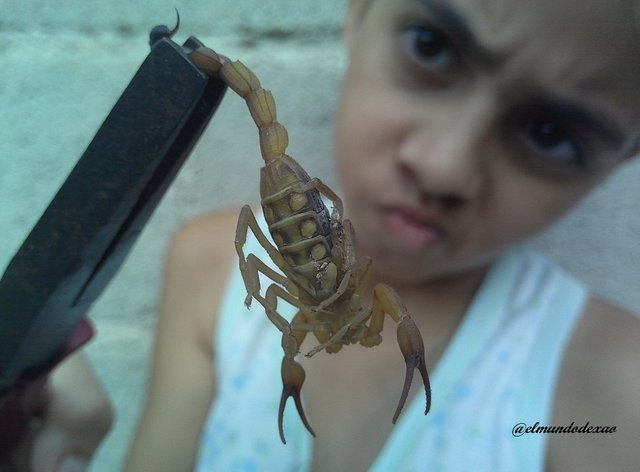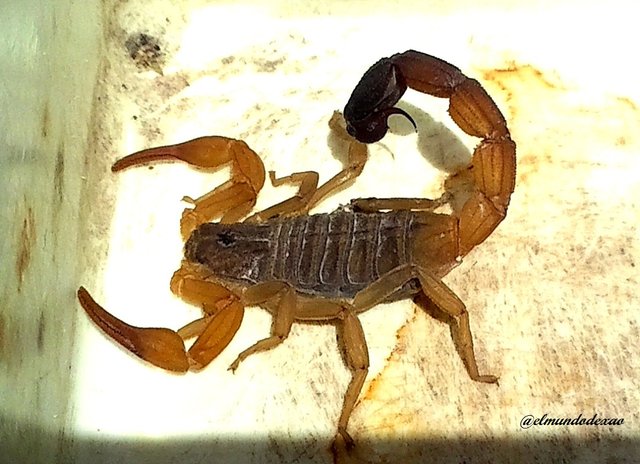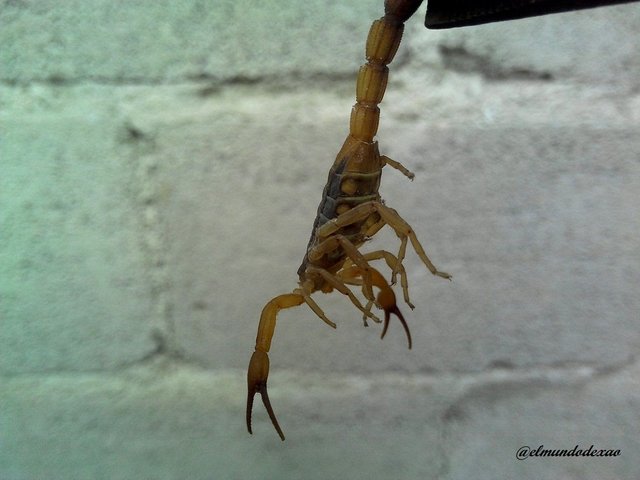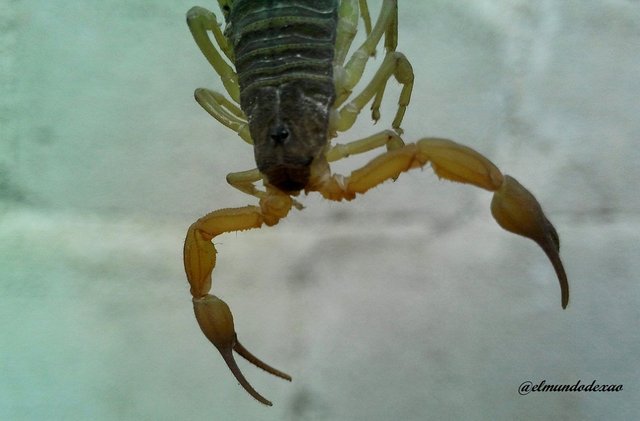Hola Steemians… Hoy les quiero contar como diferencio si un alacrán es venenoso, y si en realidad tiene alguna importancia diferenciarlos. Por lo general conseguimos alacranes casi a diario en ciertas épocas del año, me enseñaron a identificarlos ya que es muy importante en caso de sufrir una picadura. Por ejemplo: Cuando un niño sufre una picadura y logra ver que es un alacrán pero este se escapa; debería poder informar a quien lo auxilie, si el alacrán era venenoso o no.

There are three ways to identify them but two of these, from my opinion are unsuccessful and then I explain why.
¿Cómo identificarlos? Hay tres formas de identificarlos pero dos de estas, desde mi opinión son fallidas y a continuación les explico porque.
La Primera: “El aguijón” Esta la considero fallida porque carecemos de una visión con capacidad de congelar imágenes y hacer un acercamiento. A que me refiero. Si veo un alacrán acercándose a mí, por más que lo intente no lograre ver ese aguijón de punta doble. Para los que no saben les aclaro; un alacrán venenoso posee un aguijón que al inicio del mismo existe una pequeña protuberancia por donde segrega el veneno.
La Segunda: “El Color” tampoco podemos confiarnos por el color. Se supone que el alacrán venenoso es de color marrón claro y oscuro, en cambio el alacrán inofensivo tiende a tener marrón oscuro y negro. Esto es como una broma de mal gusto de la naturaleza; el que se ve aterrador es el inofensivo y el más estilizado es el peligroso. Y por qué digo que no podemos confiarnos, esta característica no siempre se cumple.

But what does this difference consist of:
The poisonous scorpion has long and thin claws (we could define them as rectangular).
The harmless scorpion has short, rounded claws (we can define them as oval).
La tercera: “Las Pinzas”, desde mi parecer esta sería la característica más confiable. A diferencia de la primera esta si la podemos apreciar a simple vista, ya que, si se acerca o se aleja podemos notar esta diferencia. Pero en que consiste dicha diferencia: El alacrán venenoso tiene pinzas largas y finas (podríamos definirlas como rectangulares). El alacrán inofensivo tiene pinzas cortas y redondeadas (podemos definirlas ovaladas).

If we suffer the sting of a scorpion (in my case I carry a pair) and we can see that it is not poisonous, there is nothing to worry about. On the other hand, if it is, we must go quickly to a hospital. An additional fact is that if we can catch it (dead or alive) we take it so that whoever will attend to us can observe it. Of course, when I say dead, I don't mean shredded with the shoe, so the medical staff will know what to do next. I say goodbye and I hope this information is useful to you.
¿Por qué es bueno saber esto? Si sufrimos la picadura de un alacrán (en mi caso llevo un par) y podemos ver que no es venenoso, no hay de qué preocuparse. En cambio si lo es, debemos dirigirnos rápidamente a un hospital. Un dato adicional es que si podemos atraparlo (vivo o muerto) lo llevamos para que lo observe quien nos atenderá. Por supuesto que cuando digo muerto, no me refiero a triturado con el zapato, así el personal médico sabrá que procedimiento seguir. Me despido y espero les sea de utilidad esta información.


A useful post, I liked it, but beware of a scorpion, my dear
Downvoting a post can decrease pending rewards and make it less visible. Common reasons:
Submit
Hello @mohamado, that's right, I'm very careful...

Thanks to read me and coment.
Downvoting a post can decrease pending rewards and make it less visible. Common reasons:
Submit